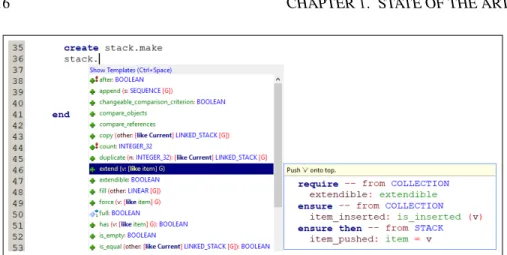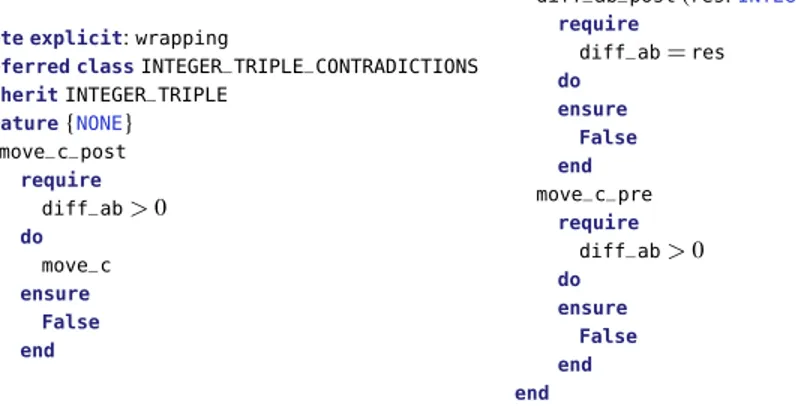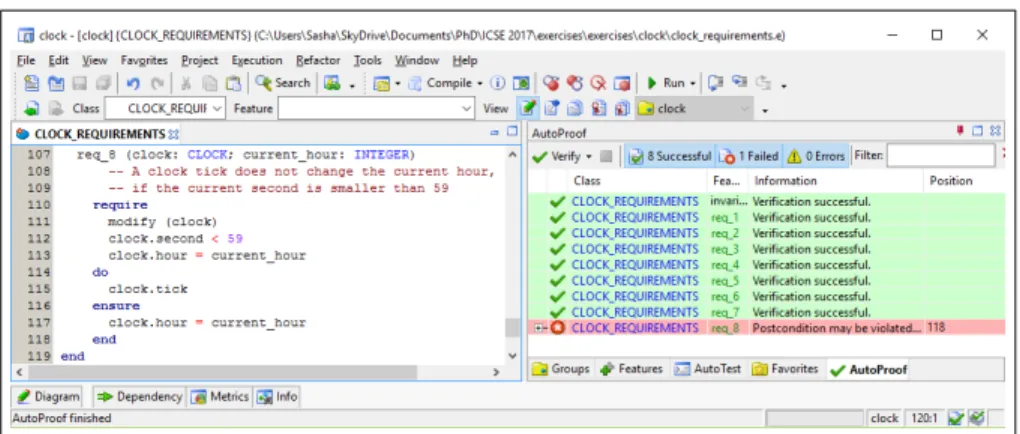Exigences orientées objets dans un cycle de vie continu
Texte intégral
Figure
![Figure 1.1: Multirequirement describing relationships between requirements and projects (taken from the original work [Mey13])](https://thumb-eu.123doks.com/thumbv2/123doknet/2225988.15475/30.918.247.751.197.566/figure-multirequirement-describing-relationships-requirements-projects-taken-original.webp)

![Table 4.1: Distribution of the requirements analyzed by Dwyer et al. [DAC99] among known SRPs](https://thumb-eu.123doks.com/thumbv2/123doknet/2225988.15475/50.918.251.744.161.410/table-distribution-requirements-analyzed-dwyer-dac-known-srps.webp)

Documents relatifs
Presence of mo- tivators (e.g. social recognition) can increase motivation in employees and give positive satisfaction; whereas hygiene factors (e.g. job security) will not lead
In EPEE, our Eiffel Parallel Execution Environment, we propose to use a kind of parallelism known as data-parallelism, encapsulated within classes of the Eiffel
In this paper, we propose a requirement-centric approach which allows: (i) modeling users’ requirements for SBAs with the MAP formalism and specifying required services using
Sreenath and Raman (48) also found that there were two stages in the running-in of liner surfaces. While the engine is run at constant load and speed, the asperities are
In this paper, w e refute the argument that small classes are more cohesive than larger classes (where size is dened in terms of the number of methods in a class).. A t present,
Overall, the mapping of the Karlskrona Manifesto princi- ples in Table 3, the method (see Figure 1), and the template for documenting (see Table 4) provide guidance to
This research proposes a new integrated framework in software requirement analysis, taking advantages from existing methods like i*, Message Sequence Chart, KAOS,
Unsurprisingly, goal modeling languages such as i*, Tropos, Techne, KAOS and the Goal-oriented Requirement Language (GRL) have chosen graphical syntaxes for




![Figure 11.1: Landing set (from Boniol et al. [BW14]).](https://thumb-eu.123doks.com/thumbv2/123doknet/2225988.15475/133.918.179.658.180.501/figure-landing-set-boniol-et-al-bw.webp)
